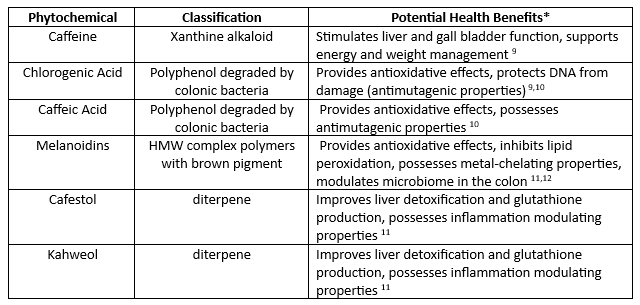
As one of the oldest medical procedures still in use today, enemas have been used to optimize health and wellness in a variety of ways. Enema benefits stretch beyond the bowel and may improve circulation, boost energy, manage weight, and clear the skin.
For centuries, enemas were considered an indispensable home remedy to treat bowel issues and constipation as well as to detoxify or cleanse the colon.1 In the 19th century, the predominant medical theory was that most diseases were caused by fecal material in the colon, which was thought to slowly poison the body. Enemas were used as a regular wellness practice to thoroughly cleanse the body and were considered an important element in maintaining long-lasting health.
In the 1920s, German physician Max Gerson utilized black coffee enemas, in combination with a potassium-rich plant-based diet, to improve the health of patients suffering from chronic health conditions.2 He believed that most all degenerative diseases shared the same root cause – toxicity and nutritional deficiency. After 30 years of clinical experience with what is now known as the Gerson Therapy, Dr. Gerson published A Cancer Therapy: Results of 50 Cases, which includes details of the theories, treatments, and results he was able to achieve with patients who had exhausted all available conventional medical treatments.3 Today, practitioners that utilize black coffee enemas and the guidance provided by the Gerson Institute attest to their usefulness in improving health outcomes for their patients.
What are the different types of enemas?
The colon is the site of fluid and electrolyte absorption as well as the conduit and storage reservoir of solid metabolic wastes.4 As a medical treatment, enemas are used to administer medication, flush out the colon, and, most commonly, to improve bowel regularity and relieve constipation. Throughout human history, constipation has been called ‘the disease of diseases’ and was deemed harmful to health, contributing to what was known as autointoxication.5
The oldest record of enema use comes from Egypt, mentioned in the Ebers Papyrus, a compilation of medical texts written 3,500 years ago.6 During an enema, room temperature fluid (often infused with botanicals or salts) is used to gently stimulate the muscles of the colon, causing the contraction and elimination of softened stool from the colon.
Different types of fluid used in enemas have different purposes:
- Purified water. Enemas using purified water-based solutions are categorized as “cleansing enemas.” Retained in the rectum for only a few minutes, cleansing water enemas are considered the easiest and most accessible method for addressing constipation in children as well as elders. Purified water enemas are also used before performing CT scans in hospitals to gain an unobstructed view of the large intestine.7
- Sea salt or saline. Because of their mineral content, sea salt enemas are considered the best choice for first-time enema users. In some cases, when cramping is likely, Epsom salts (magnesium sulfate) are used to relax bowel muscles and mechanically promote defecation. Unlike purified water enemas, saline enema solutions have a neutral concentration gradient and do not draw much water into the colon, nor do they rob electrolytes from the body.7
- Herbal teas. Enemas that utilize specific herbal teas also deliver phytonutrients that may help to cleanse, nourish, protect, and soothe tissues while gently stimulating bowel elimination. These types of enemas are categorized as “retention enemas” because the medicated enema solution is thoroughly cooled, administered, and retained in the rectum for a minimum of 15 minutes.7 Common medicinal plants used to prepare herbal enemas include antispasmodic and anti-inflammatory chamomile flowers (Matricaria recutita), tissue toning red raspberry leaf (Rubus idaeus) and even garlic (Allium sativum) for its antifungal, antiparasitic, and antiseptic properties.8
- Probiotic cultures. Probiotic enemas, another type of retention enema, may improve chronic gut inflammation and symptoms associated with IBS, hemorrhoids, and constipation. Bypassing the oral route, probiotic enemas are an important, localized way to improve the health and function of beneficial bacteria that reside in the colon. This is done via live-cultured yogurts inoculated with the necessary strains to reestablish and invigorate health.7
- Organic coffee. Coffee enemas are considered a bit more specialized, as far as retention enemas go, and are primarily indicated for constipation and an over-burdened liver. Coffee enemas stimulate both the liver and large intestine, improving detoxification. Coffee enemas are prepared with brewed, caffeinated black coffee diluted with purified water. Caffeine gently stimulates both bowel and liver function while a plethora of antioxidant compounds in coffee provide localized and systemic health benefits. 7
Coffee enema benefits
Coffee enemas are used to address more than constipation. The phytochemistry of gently roasted coffee beans lends itself to delivering an array of beneficial compounds with unique and desirable health benefits.
Table 1: Bioactive Compounds Commonly Present in Black Coffee Enema Solutions

As Table 1 demonstrates, nearly all compounds present in medium-roasted coffee enema solutions have the potential to reduce free radical damage and associated inflammation as well as protect DNA. In addition to caffeine’s gallbladder stimulating effects, the diterpenes, cafestol and kahweol, have been considered the primary compounds involved in improving liver detoxification and reducing tumor cell activity. The potent polyphenols, chlorogenic and caffeic acid deliver protective properties to localized tissues and modulate the colon’s microbiome. Black coffee is one of the main sources of melanoidins in the human diet and is being studied for its antioxidative potential in protecting the colon from free radical damage.12
Coffee enema considerations
Coffee enema advocates report that in addition to relieving constipation, using black coffee enemas increases energy, modulates immunity, halts candida or yeast overgrowth, improves skin conditions, and reduces heavy metal toxicity.13 However, there are several factors to consider before deciding that coffee enemas are right for your patient’s constitution and your overall health.
Who should not do a coffee enema?
While extensive scientific evidence on the safety and effectiveness of coffee enemas is limited, overall conclusions from a 2020 meta-analysis and systematic review conducted on the practical and safe use of coffee enemas conclude that the greatest risks of coffee enemas are accidental bowel perforation and post-enema infection due to improper preparation and administration. 6,14 Safety is more important than embarrassment, so practitioners should make sure clients understand, step-by-step, how, and when to use coffee enemas.
Furthermore, the use of coffee enemas has specific contraindications. According to The Gerson Institute, coffee enemas are not for everyone and are not recommended unless under strict supervision of an experienced Gerson-certified practitioner if any of the following exist: 3
-
Undergoing chemotherapy treatments
-
Kidney, heart, or respiratory failure
-
Bleeding or ulceration in the colon tract
-
Ulcerative colitis
-
Crohn’s disease
-
Ileostomy (no colon)
-
Hypertension or tachycardia
-
Pregnant
-
Acute or ongoing diarrhea
-
First 6-8 weeks post-surgery
Typical Side Effects of Coffee Enemas 13
Side effects of coffee enemas are expected and may include:
-
Mild physical discomfort. During a coffee enema, the patient may experience a sense of fullness or pressure and possibly mild cramping and bloating. For those new to coffee enemas, this can be uncomfortable.
-
Increased energy and heart rate. Individuals who are sensitive to caffeine may experience shakiness or increased heart rate because of the stimulant properties in coffee.
-
Dehydration. Fluid replacement is crucial when using enemas for constipation. Caffeine can be dehydrating to the body. Adequate hydration before and after is essential to safe and successful coffee enemas.
-
Electrolyte imbalance. This can occur along with dehydration and is a potentially serious side effect, especially with frequent enemas. Coffee enemas remove potassium15, an essential electrolyte, so make sure to increase potassium intake with fresh juices, plain baked potatoes, coconut water, and don’t forget your greens powder or fermented greens capsules!
How to do a coffee enema?
If you’ve determined that coffee enemas are the best next step for your patient’s detoxification or wellness protocol, it is crucial to discuss the pros and cons, as well as the benefits and side effects that may arise. Due to the intimate nature of administering a coffee enema, it is important to be guided by an experienced wellness practitioner or a practitioner certified in Gerson Therapy.
Typically, the best time to perform an enema is in the morning after the first bowel movement has occurred. Always use filtered water, sterilized equipment, lukewarm and finely strained organic, medium-roast coffee, and a food-grade lubricant, like organic, unrefined coconut oil. Detailed information on the Gerson Therapy protocols and how to administer a coffee enema is available for review.3,19
Do I need a coffee enema kit?
Enema kits make the task of integrating coffee enemas into your wellness regimen much easier and safer. For more than 30 years, Premier Research Labs has offered practical and innovative solutions to optimizing wellness, including enema kits. Our versatile enema bucket can hold 1 ½ quarts of room temperature, medicated enema solutions (i.e., coffee, chamomile tea, etc.) and includes the polyethylene tubing (not undesirable polyvinylchloride tubing) and a convenient clamp to gently regulate the enema solution flowing through the tube. All equipment can be easily and thoroughly washed between uses with hot, soapy water.
Do I need to use a certain type of coffee?
All published literature on coffee enemas references the use of black or roasted coffee beans. While there has been recent hype about green coffee enemas being more effective than traditional, black coffee enemas, the science speaks for itself. Research indicates that medium-roasted coffee beans retain the highest amount of bioavailable antioxidant compounds. During the roasting process, many beneficial compounds within coffee beans become unlocked or activated. Bioavailability of beneficial compounds is one of the main reasons that green coffee enema solutions are not as effective as traditional black coffee enema solutions.
Why Use Black instead of Green Coffee Beans for Enema Solutions?
There are 3 reasons why using organic, medium-roasted coffee beans is safer and potentially more effective than using green coffee beans for enema solutions:
-
Less acidic = better tolerated. Green coffee beans are more acidic than black or roasted coffee beans. This means that coffee enemas prepared with organic, medium-roasted coffee beans will result in less cramping and tissue irritation during and after enemas.
-
More beneficial, bioavailable compounds. Many of the beneficial compounds in green coffee beans are not very water-soluble, and in the case of melanoidins, may not be present at all. Melanoidins are one of the primary compounds that make black coffee enemas a next-level detoxification experience.12 Research indicates that melanoidins have protective antioxidative and metal-chelating properties. Additionally, melanoidins also appear to modulate inflammation as well as the microbiome health of the colon. 12
-
No toxic tagalongs. Evidence reveals that mycotoxins, or toxins formed by mold, are present in a large percentage of coffee beans. 16 Because green coffee beans are not subjected to calculated roasting methods, potential pathogenic microbes and mycotoxins are likely tagging along into green coffee enema solutions and increase risk for localized tissue irritation (colitis) and post-enema infection. It’s important to use an organic, medium-roasted coffee that is thoroughly tested for mycotoxins.
Is it safe to do a coffee enema daily?
Everything in moderation applies to the frequency of coffee enema use. According to the Canadian Society of Intestinal Research, frequent or long-term use of enemas can disrupt electrolyte as well as microbiome balance in the gut.
Properly administered coffee enemas may be used as an alternative to stimulant laxatives without negative side effects. However, like laxatives, habitual use of enemas can also result in reliance on them to have a complete bowel movement. Remember to increase both fiber and water intake when using coffee enemas.
Potential adjuncts and alternatives to coffee enemas
While coffee enemas have their place in wellness protocols, it is evident that they are not for everyone and must be practiced safely and hygienically to reduce risk and optimize benefits. Don’t forget about other practical ways to stimulate efficient digestion and thorough elimination.
-
Movement and exercise. In a day and age where humans are sedentary now more than ever, it is no wonder that digestion-related issues are near the top of common health complaints/concerns. Movement of any kind, walking, running, aerobics, or biking will improve energy levels and promote more efficient digestion. (walking, running, biking, aerobics)
-
Hydration. Hydration levels and constipation go hand in hand. Successful bowel movements occur when the intestines can draw extra water into the colon, adding moisture and softening stools. If you are not drinking enough hydrating fluids, having a complete bowel movement becomes challenging, not to mention uncomfortable. Drinking herbal teas like nettle (Urtica dioica), hibiscus (Hibiscus sabdarrifa) or chamomile (Matricaria recutita) offer a flavorful way to hydrate, delivering nutrients and trace amounts of electrolytes.
-
Dietary Fiber. Eat more vegetables, and lots of them! This is solid advice for anyone challenged with constipation. In a systemic review and meta-analysis on the effect of fiber supplementation on chronic adult constipation, 77% of people with chronic constipation found some relief by increasing their fiber intake. Supplementing with a soluble fiber like organic psyllium (Plantago ovata) husks, not only promotes bowel regularity, but may be helpful in managing healthy weight, glucose, and cholesterol levels while acting as a prebiotic for a healthy gut microbiome. 17
-
Aloe vera juice or powder Aloe vera gel, juice or powder is considered a natural laxative and has been effectively used for centuries to enhance bowel efficiency and mucous membrane integrity, soothe inflammation, and heal ulcerations. Fructans and acemannan, polysaccharides present in aloe, have been investigated for their prebiotic properties; specifically for their ability to increase the production of beneficial short chain fatty acids (SCFA). Small doses of Aloe vera preparations should be used to reduce possible cramping or loose stools, and should be avoided altogether if Crohn’s disease, colitis, or hemorrhoids is present.
References
-
Lavage Wellness Center. “History of the Enema and Frequently Asked Questions.” https://lavagewellness.com/files/LavageWellness_FAQs.pdf. Accessed 16 November 2023.
-
Hippensteele, Alana. “Fun Fact: On Clysters, ritual enemas for health maintenance throughout history.” Pharmacy Times, March 12, 2021.
-
Gerson Institute. How it Works. https://gerson.org/how-it-works/ Accessed on 28 November 2023.
-
Arnaud, Maurice. “Mild dehydration: A risk factor of constipation?” European Journal of Clinical Nutrition, vol. 57, Suppl 2, 2003, pp. S88-S95. https://pubmed.ncbi.nlm.nih.gov/14681719/ . Accessed on 7 December 2023.
-
Whorton, James. “Civilization and the colon: constipation as the “disease of diseases.” British Medical Journal, vol. 321, 2000, pp. 1586 – 1589. https://www.ncbi.nlm.nih.gov/pmc/articles/PMC1119264/pdf/1586.pdf. Accessed on 29 November 2023.
-
GI Society. “Enemas.” Canadian Society of Intestinal Research. Published June 19, 2019. https://badgut.org/?s=enema Accessed on 16 November 2023.
-
Panoff, Lauren MPH. “Are enemas safe? Types, benefits, and concerns.” https://www.healthline.com/nutrition/enema-benefits Accessed on 28 November 2023.
-
Medisential. “Top 10 herbal enema recipes you must try.” https://medisential.com/blogs/health/top-10-herbal-enema-recipes-you-must-try Accessed on 28 November 2023.
-
Socala K, Szopa A, Serefko A, et al. “Neuroprotective effects of coffee bioactive compounds: a review.” International Journal of Molecular Science, vol. 22, no. 107, 2020, pp. 1-64. https://www.ncbi.nlm.nih.gov/pmc/articles/PMC7795778/pdf/ijms-22-00107.pdf Accessed on 7 December 2023.
-
Olthof MR, Hollman PCH, Katan, MB. “Chlorogenic acid and caffeic acid are absorbed by humans”. American Society for Nutritional Sciences. Vol. 131, no. 1, 2001, pp. 66-71. https://jn.nutrition.org/article/S0022-3166(22)14459-7/fulltext Accessed on 7 December 2023.
-
Ren Y, Wang C, Xu, J, et al. “Cafestol and Kahweol: a review on their bioactivities and pharmacological properties.” International Journal of Molecular Science, vol. 20, no. 17, 2019, pp 1-15. https://www.ncbi.nlm.nih.gov/pmc/articles/PMC6747192/pdf/ijms-20-04238.pdf Accessed on 7 December 2023.
-
Moreira A, Nunes F, Domingues R, et al. “Coffee melanoidins: structures, mechanisms of formation and potential health impacts.” Food & Function, vol. 3, 2012, pp. 903-915. https://pubmed.ncbi.nlm.nih.gov/22584883/ Accessed on 7 December 2023.
-
McDermott Annette. “Everything you should know about coffee enemas.” https://www.healthline.com/health/coffee-enema. Accessed on 28 November 2023.
-
Son H MPH, Ph.D., Song HJ MPharm, Seo HJ RN, Ph.D., et al. “The safety and effectiveness of self-administered coffee enema – a systematic review of case reports. Medicine, vol. 99, no. 36, 2020, pp. 1-7. https://www.ncbi.nlm.nih.gov/pmc/articles/PMC7478478/pdf/medi-99-e21998.pdf Accessed on 16 November 2023.
-
Nall Rachel MSN. “Would I benefit form a coffee enema?” https://www.medicalnewstoday.com/articles/315663#:~:text=There%20is%20little%20evidence%20to,and%20reactivate%20the%20immune%20system. Accessed on 16 November 2023.
-
Gunnars Kris, BSc. “Mycotoxins Myth: The truth about mold in coffee.” https://www.healthline.com/nutrition/the-mycotoxins-in-coffee-myth Accessed on 7 December 2023.
-
Semeco Arlene MS,RD. “8 benefits of psyllium husk.” https://www.medicalnewstoday.com/articles/318707 Accessed on 11 December 2023.
-
Quezada MP, Salinas C, Gotteland M, et al. “Acemannan and fructans from Aloe vera plants as novel prebiotics.” Journal of Agricultural and Food Chemistry, vol. 65, no. 46, 2017, pp. 10029-10039. Accessed on 11 December 2023.
- Gerson Institute. Coffee Enema Procedure. https://gerson-research.org/coffee-enema-procedure/ Accessed on 28 November 2023.
Jenny Perez is an herbal educator, researcher, and writer who has been immersed in the field of nutrition and botanical medicine for more than 20 years. Jenny has created curriculum, content, and educational materials for Quantum Nutrition Labs, Premier Research Labs, the American Botanical Council, and Bastyr University’s Botanical Medicine Department where she was Adjunct Faculty, Herb Garden Manager, and Director of the Holistic Landscape Design certificate program.









